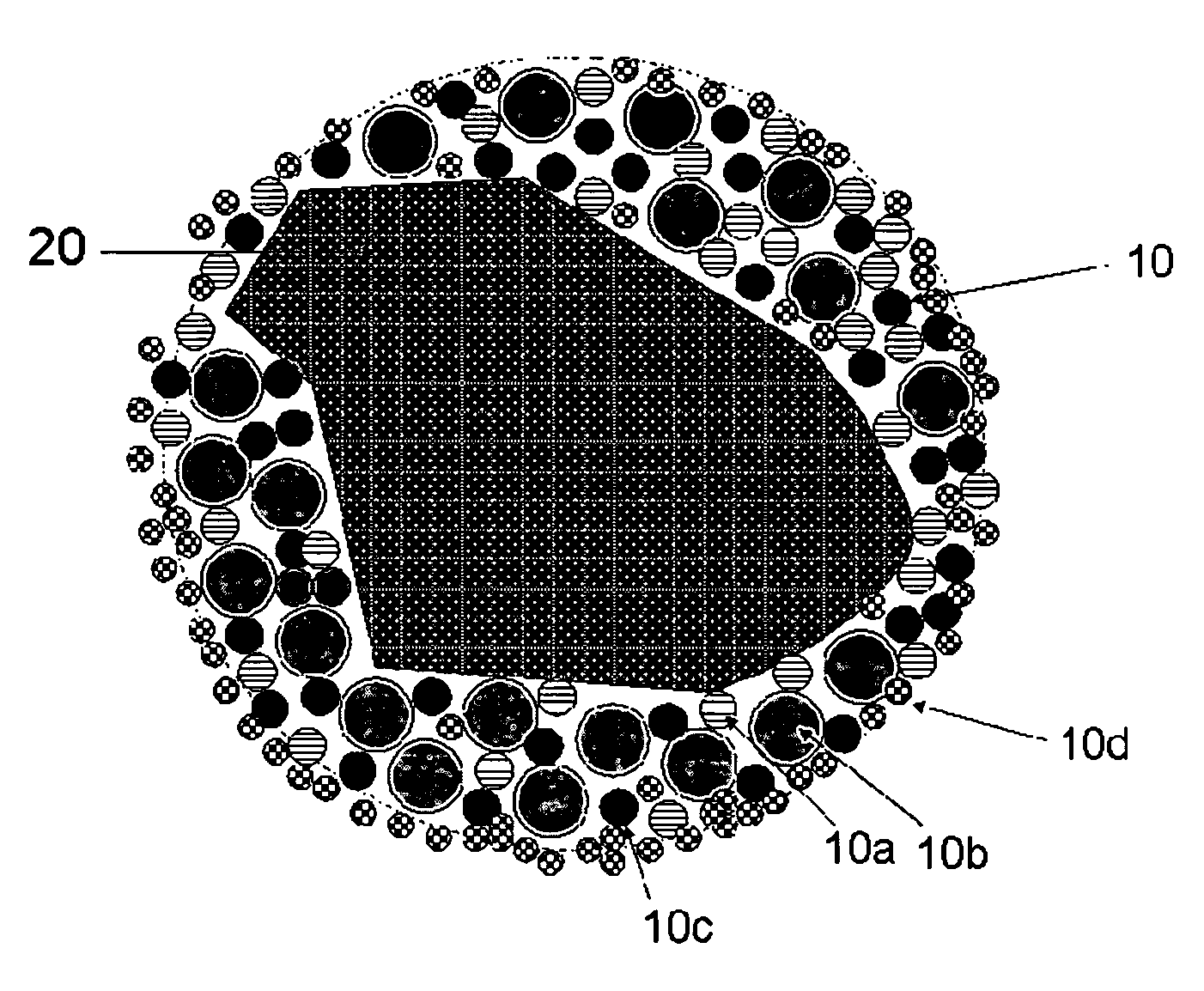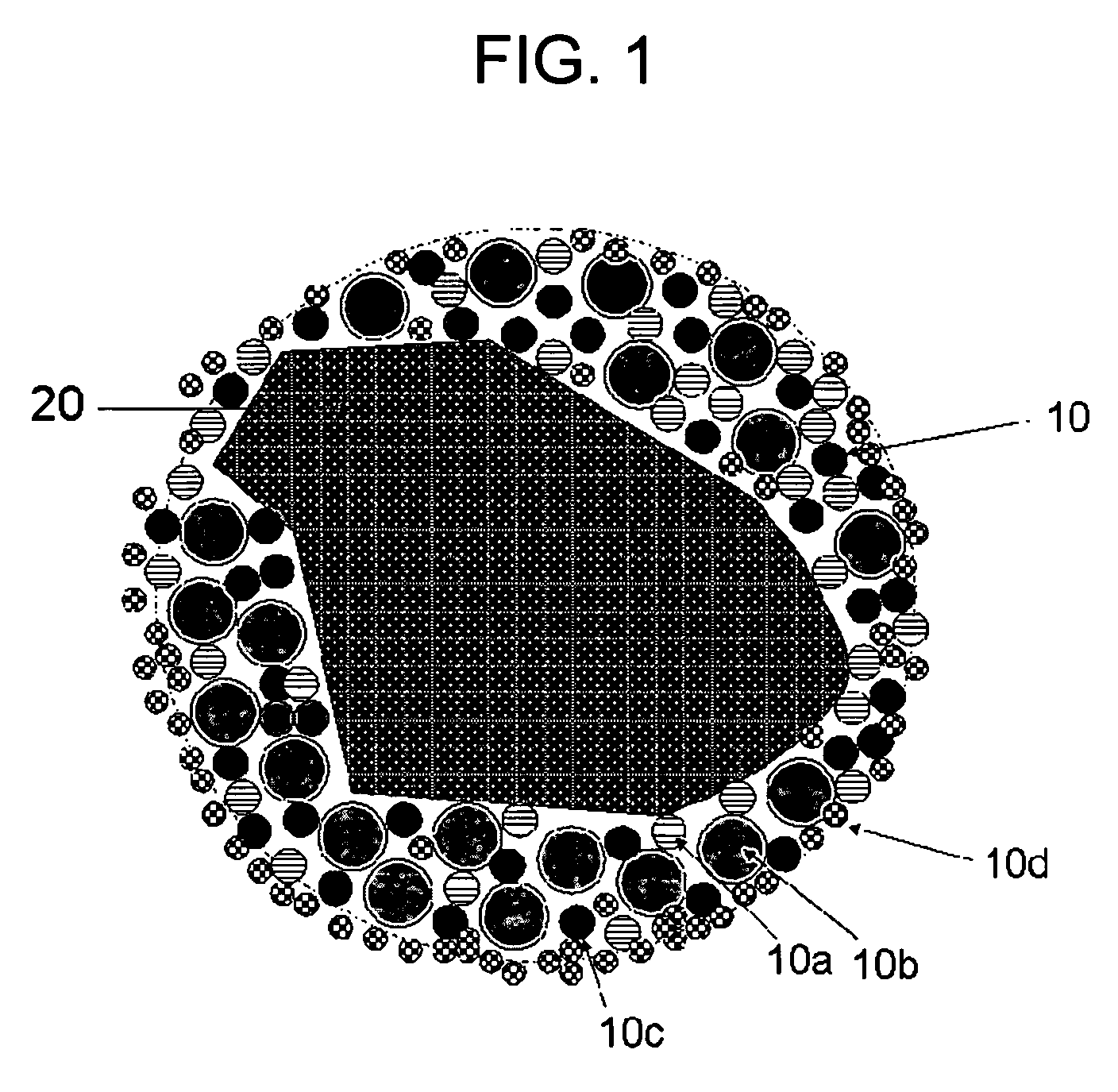Color toner having low contamination of charging elements
a technology of color toner and charging elements, applied in the field of non-magnetic monocomponent color toner, can solve the problems of difficult to obtain accurate transfer performance, and increasing the amount of added fine particles, so as to reduce the contamination of charging elements, improve the transfer efficiency, and improve the effect of image quality
- Summary
- Abstract
- Description
- Claims
- Application Information
AI Technical Summary
Benefits of technology
Problems solved by technology
Method used
Image
Examples
example 1
[0067]1) Preparation of Magenta Toner Mother Particle
[0068]92 parts by weight of polyester resin (molecular weight=2.5×104), 5 parts by weight of quinacridone Red 122, 1 part by weight of tertiary ammonium salt, 2 parts by weight of polypropylene having a low molecular weight were mixed using a HENSCHEL mixer. The mixture was melted and kneaded at 165 □ using a twin melt kneader, crushed using a jet mil crusher, and classified using an air classifier to obtain a toner mother particle having a volume-average particle size of 9.0 μm.
[0069]2) Preparation of Non-magnetic Mono-component Color Toner
[0070]As indicated in Table 1 with respect to 100 parts by weight of the toner mother particle prepared in the above, 5 parts by weight of fatty acid metal salt A 100 parts by weight having an average particle size 0.5 μm including Mg less than 5 wt %, 0.1 parts by weight of polyvinylidene fluoride (PVDF) having average particle size 0.1 μm as the first spherical organic particle, and 0.1 parts...
examples [UNK]
EXAMPLES 2˜121
[0073]Examples 2-121 were performed according to substantially the same method as in Example 1, except that fatty acid metal salt and organic particle were used as shown in Table 1. The fatty acid contained Na, K, Al, Ca, Zn, Mg, Co, Fe, Mn, Ba, Vd or Sn as a metal, and caproic acid, carylic acid, lauric acid, oleic acid, stearic acid, iso-stearic acid as a fatty acid.
[0074]
TABLE 2Fatty acid metal saltFirst organic particleSecond organic particleEXAMPLE(particle size, type, amount)(particle size, type, amount)(particle size, type, amount)20.5 μm, Fatty acid metal salt A, 0.52.0 μm, PMMA 0.10.1 μm, PVDF 0.130.5 μm, Fatty acid metal salt A 0.52.0 μm, PTFE 1.50.1 μm, PVDF 0.140.5 μm, Fatty acid metal salt A 0.52.0 μm, PMMA 1.50.1 μm, PVDF 0.150.5 μm, Fatty acid metal salt A 0.52.0 μm, PTFE 0.10.1 μm, PVDF 1.560.5 μm, Fatty acid metal salt A 0.52.0 μm, PMMA 0.10.1 μm, PVDF 1.570.5 μm, Fatty acid metal salt A 0.52.0 μm, PTFE 1.50.1 μm, PVDF 1.580.5 μm, Fatty acid metal salt...
PUM
| Property | Measurement | Unit |
|---|---|---|
| particle size | aaaaa | aaaaa |
| particle size | aaaaa | aaaaa |
| particle size | aaaaa | aaaaa |
Abstract
Description
Claims
Application Information
 Login to View More
Login to View More - R&D
- Intellectual Property
- Life Sciences
- Materials
- Tech Scout
- Unparalleled Data Quality
- Higher Quality Content
- 60% Fewer Hallucinations
Browse by: Latest US Patents, China's latest patents, Technical Efficacy Thesaurus, Application Domain, Technology Topic, Popular Technical Reports.
© 2025 PatSnap. All rights reserved.Legal|Privacy policy|Modern Slavery Act Transparency Statement|Sitemap|About US| Contact US: help@patsnap.com


